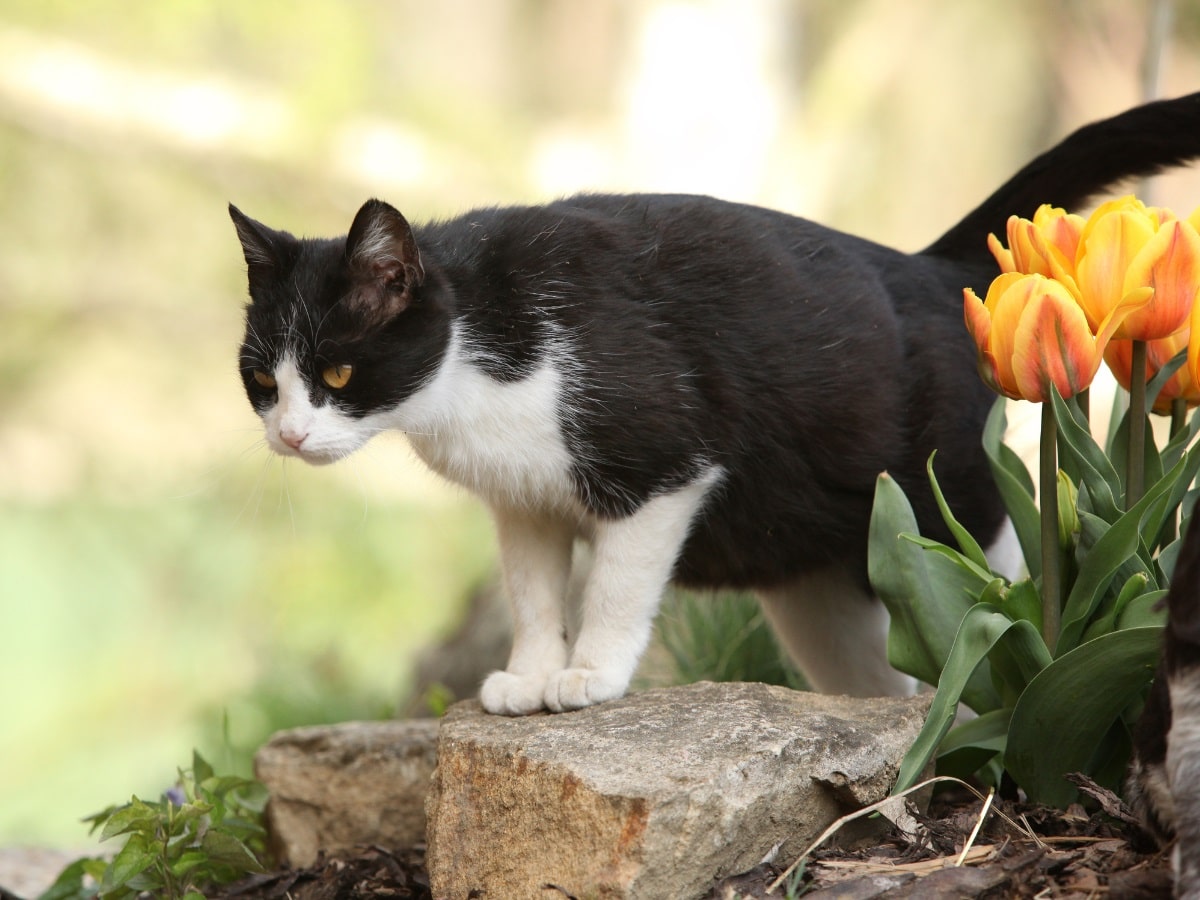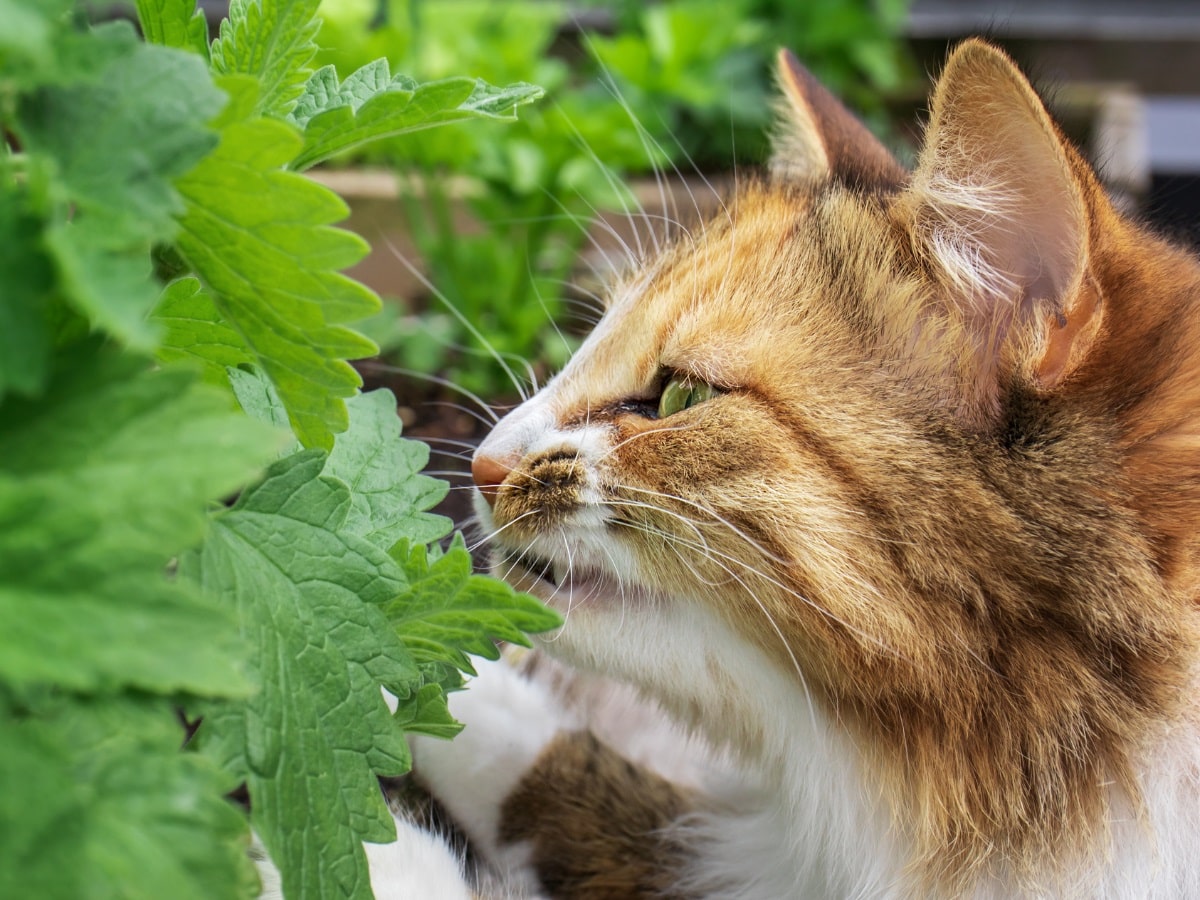Spring is a beautiful and colourful time of year, where the evenings get lighter, flowers begin to bloom, and people across the UK buy flowers for their nearest and dearest. Amidst this beauty, it’s vital to remember that many plants and herbs poisonous to cats are also prominent during this season.
Cats are pretty low-maintenance pets, but they may unknowingly be at risk from these springtime blooms, highlighting the importance of looking after them and keeping them safe at this time of year.
In a nutshell:
Many popular indoor and outdoor plants are highly toxic to cats
Symptoms of poisoning include drooling, vomiting and restlessness
Cats are more likely to ingest pollen indirectly i.e. when licking their paws
Protect your cat by keeping your garden clean and providing distractions

What flowers are poisonous to cats?
Cats are obligate carnivores, meaning they only eat meat. While some curious cats may nibble at plants and flowers, poisoning is much more likely to occur from cats ingesting a toxin indirectly. They may lick pollen from their fur or paws, or drink water from a vase containing flowers.
Examples of poisonous flowers include (but are not limited to):
Indoor plants:
- Cycads
- Aloe vera
- Ficus
- Mistletoe
Outdoor plants:
- Lilies
- Foxglove
- Juniper
- Amaryllis
- Daffodils
- Tulips
- Chrysanthemums
- Cyclamen
Top tip: Thinking of adding a new plant/flower species to your collection?
Are daffodils poisonous to cats?
Daffodils are highly toxic to cats. They contain a substance called lycorine which, if ingested, can lead to serious heart or respiratory trouble. The bulbs are especially poisonous and can cause severe vomiting.
Are hyacinths poisonous to cats?
Hyacinths are very poisonous for cats. As with daffodils, the most poisonous part is the bulbs. Symptoms of hyacinth poisoning can include drooling, sickness and diarrhoea.
Which spring flowers are non-toxic but still dangerous?
There’s a whole plethora of plants out there, and some are more harmful than others. Symptoms will also depend on the quantity that your cat ingests too.
As a cat owner, the best thing to do is research the specific plants you have in your garden to check their toxicity levels.
What about herbs? Which herbs are toxic to cats?
Growing your own herbs, either in your kitchen or out in the garden? Here’s what is safe for cats (and what’s dangerous too):
Herbs safe for cats:
- Rosemary
- Thyme
- Sage
- Coriander
- Basil
Herbs dangerous for cats:
- Tarragon
- Mint
- Oregano
- Garlic
As with other plant or flower species, do your research before planting herbs to make sure it is safe for your cat.

I love my cat but I love plants too. What flowers are safe for cats?
Thankfully, there are plenty of indoor and outdoor plants that are generally safe for cats. You can add the following to your plant family without having to worry:
Indoor:
- Orchids
- Money tree
- Crocodile fern
- Boston fern
- Calathea
Outdoor:
- Roses
- Petunias
- Gerbera
- Hollyhock
- Violets
- Sunflowers
Vets always recommend researching a particular plant to make sure it’s cat-friendly before you add it to your home.
How to keep your cat safe from poisonous plants?
Cats are typically seen as low-maintenance pets, but they are also curious creatures who love to explore. Here are two ways to keep them as safe as possible without limiting their freedom.
Tidy your garden
Sweeping up stray petals from your lawn and keeping flowerbeds in check will help to keep harmful plants out of your cat’s way.
Distract your cat
Cats will be less likely to interact with flowers if they have something more fun to play with. You can plant cat grass in your garden, or keep your cat entertained with lots of stimulating toys. A scratching post will be useful too!

